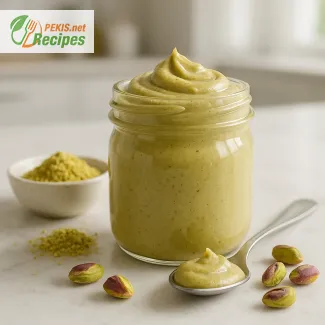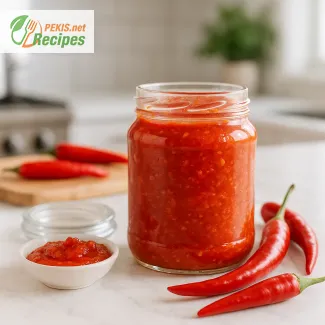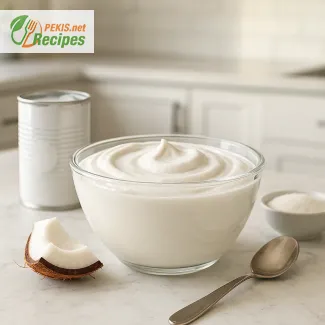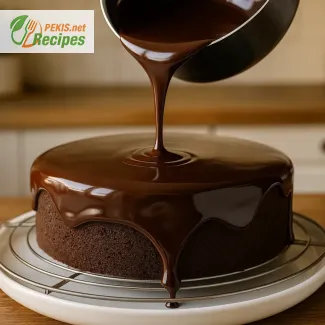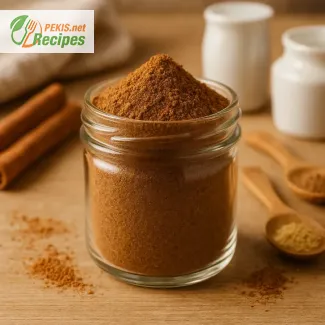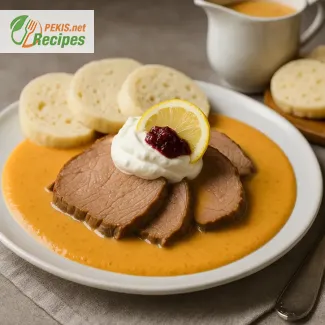
Discover the rich tradition behind this classic Czech dish
A timeless culinary icon that blends beef, root vegetables, and cream into a comforting masterpiece
Svickova na smetane, also known simply as svíčková, is more than just a dish—it's a cherished cornerstone of Czech cuisine, steeped in tradition and flavor. This creamy beef sauce served with tender slices of marinated beef and bread dumplings (knedlíky) has remained a beloved favorite across generations. It's a meal that brings families together, graces special occasions, and represents a deep cultural connection to the Bohemian heartland.
This authentic Czech recipe is admired for its complexity and comfort. Unlike many European beef dishes, svíčková is prepared with a rich base of root vegetables—typically carrots, celery, and parsley root—slow-cooked to release their natural sweetness and then blended into a velvety cream sauce. What makes svickova exceptional is not just its silky texture or golden-orange hue, but its delicate balance of sweet, sour, and savory flavors, achieved by adding a touch of vinegar, lemon, and a small amount of sugar toward the end of the preparation.
This Czech classic is often compared to other European braised meat dishes, yet it stands out because of its uniquely mild acidity, creamy consistency, and the way it harmonizes spices like bay leaves, allspice, and black pepper with the natural richness of beef and cream. The result is an elegantly balanced dish that’s comforting yet refined—traditional yet timeless.
Why svickova is more than just a meal
Svickova na smetane is deeply tied to Czech identity and heritage. It’s the kind of recipe that’s passed down through families, often taught by grandmothers and served during holidays like weddings, Sunday lunches, or national celebrations. It's not just food—it’s a memory, an emotion, a ritual. Even in modern kitchens, recreating this recipe is a way to honor ancestral traditions, maintain culinary authenticity, and connect with Central European roots.
The name "svíčková" originally referred to sirloin, the traditional cut of beef used in the dish. Over time, the name has come to represent the entire preparation. In most Czech homes and restaurants today, variations might include other tender cuts of beef, but the essence remains the same: a slow-braised roast enriched by a vegetable-based creamy sauce, seasoned to perfection and served with fluffy bread dumplings.
The secret behind the perfect creamy beef sauce
One of the standout elements of svickova na smetane is its deeply flavorful sauce, achieved through slow cooking and careful layering of flavors. It starts with searing the meat to build rich fond in the pot, followed by a gentle simmer with chopped vegetables, aromatic spices, and stock. Once the meat is tender, the vegetables are puréed into the broth and enriched with double cream or sour cream, resulting in a smooth and luscious sauce that clings to every bite of beef and dumpling.
This sauce isn’t just a side—it’s the heart of the dish. A successful svickova has a sauce that’s not too thick, with a bright yet warm flavor that complements the meat without overpowering it. The inclusion of lemon juice and a small spoon of sugar creates a harmonious contrast, while the gentle acidity from vinegar lifts the cream and prevents it from feeling heavy.
Traditional accompaniments: dumplings and garnishes
No svickova recipe is complete without the traditional Czech bread dumplings, known as knedlíky. These pillowy slices are ideal for soaking up the sauce, making each bite an explosion of flavor and comfort. Often, the dish is served with a dollop of whipped cream, a spoon of cranberry sauce, and a slice of lemon—a combination that enhances the dish’s balance and adds a touch of festive elegance.
These garnishes are not mere decoration; they play an important functional role in the overall experience. The sweetness of the cranberry sauce offsets the tanginess of the sauce, while the whipped cream introduces a light, airy contrast to the richness. Together with the dumplings, they form a complete meal—balanced, satisfying, and deeply rooted in tradition.
A cultural and emotional experience
What makes svickova na smetane so iconic isn’t just its taste but the feeling it evokes. For many Czechs, it recalls the warmth of family kitchens, the smell of Sunday lunches, and the pride of sharing a dish that symbolizes national culture. Preparing this dish is an act of preservation—a way of keeping history alive through flavor.
Whether you’re exploring Czech cuisine for the first time or revisiting a childhood memory, svickova offers a rewarding and meaningful culinary journey. It invites you to slow down, cook with care, and enjoy food as it was meant to be—rich in flavor, steeped in history, and shared with people you love.
- Marinate the beef (optional but recommended): Season the beef sirloin with a pinch of salt and let it sit in the refrigerator overnight for deeper flavor penetration.
- Sear the beef: In a large pot, heat vegetable oil and sear the beef on all sides until deeply browned. Remove and set aside.
- Prepare the vegetable base: In the same pot, melt the butter, then sauté onions, carrots, parsley root, and celery root until golden. Add bay leaves, allspice, and peppercorns.
- Deglaze and simmer: Add vinegar and lemon juice to deglaze the pot. Return the beef to the pot, pour in the beef broth, cover with a lid, and simmer on low for about 2 hours, turning occasionally.
- Remove the beef: Once the meat is tender, take it out and keep it warm. Discard the bay leaves and whole spices.
- Blend the sauce: Use an immersion blender to purée the vegetable mixture until smooth. Add sugar and adjust seasoning with salt and additional lemon juice if needed.
- Thicken and cream the sauce: In a bowl, mix flour with a bit of cold water to form a slurry. Stir it into the sauce and bring to a gentle boil to thicken. Lower the heat and stir in the heavy cream. Simmer for 5–10 minutes until velvety.
- Slice and serve: Cut the beef into thin slices. Arrange on plates with slices of bread dumplings. Ladle over the hot creamy sauce.
- Garnish: Top each portion with a spoonful of cranberry sauce, a dollop of whipped cream, and a lemon slice for traditional presentation.
Elevating the flavors of svickova with thoughtful enhancements
Proven techniques and ingredient swaps to refine this Czech classic
Crafting the perfect svickova na smetane goes beyond following a traditional recipe—it's about understanding each component's role and how subtle adjustments can enhance flavor, texture, and aroma. Whether you're preparing it for the first time or seeking to refine your culinary technique, small upgrades can transform this beloved Czech dish into a true gastronomic experience.
The impact of homemade broth on depth of flavor
One of the most effective ways to elevate svickova is by using a homemade beef broth rather than a store-bought version. A slow-simmered broth made from roasted beef bones, carrots, celery, onion, and peppercorns creates a more robust, naturally rich base for the sauce. This not only deepens the overall flavor but also allows you to control the salt content, leading to a more balanced final dish.
Intensifying the vegetable base with roasting
Although the traditional recipe calls for sautéed root vegetables, roasting the carrots, parsley root, and celery root beforehand enhances their natural sweetness and imparts a subtle caramelized depth. Roasting concentrates the flavors and reduces excess moisture, which results in a thicker, more flavorful sauce after puréeing. A touch of roasted garlic added to the vegetables can also introduce a savory undertone that blends beautifully with the cream.
Customizing the level of acidity and sweetness
The signature of a well-balanced svickova lies in its interplay of sweet, sour, and savory. Traditionally, a spoon of sugar and a splash of vinegar are used. However, replacing white sugar with honey or apple syrup can add natural complexity. For acidity, consider using apple cider vinegar or a squeeze of fresh orange juice, which complements the sweetness of the vegetables while softening the sharper vinegar notes.
Choosing the right cut of meat
While beef sirloin is classic, alternative cuts such as beef brisket or chuck roast can yield equally tender results when braised slowly. These cuts are rich in connective tissue, which breaks down over time to create a succulent, melt-in-your-mouth texture. If using a fattier cut, be sure to skim excess fat from the surface of the sauce to maintain a silky and refined consistency.
The cream debate: sour cream vs. heavy cream
Cream is central to svickova’s velvety finish. Traditional recipes often call for heavy cream, but replacing half with sour cream or crème fraîche can introduce a tangy brightness that enlivens the sauce. This tweak subtly enhances the dish’s acidic profile and complements the lemon juice, creating a cleaner, more layered flavor.
Smarter thickening with vegetable purée
Some recipes rely on flour or roux to thicken the sauce, but this can mask the natural vegetable flavor. Instead, increase the proportion of root vegetables during cooking, then purée them thoroughly to create a naturally thickened base. This technique not only intensifies the flavor but also improves the nutritional profile, reducing processed starches in favor of fiber-rich ingredients.
Health-conscious ingredient swaps
To make svickova more nutrient-dense, consider replacing some cream with unsweetened oat cream or coconut cream for a dairy-light version. Use whole-grain or gluten-free dumplings instead of white bread knedlíky to increase fiber intake. Opting for grass-fed beef contributes omega-3 fatty acids and higher vitamin E content, which adds nutritional value without altering traditional taste.
Common mistakes to avoid
- Overcooking the beef: While slow cooking is essential, excessively long simmering can make the meat dry and stringy. Aim for tenderness without disintegration.
- Skipping the straining or blending: Leaving the sauce unblended results in a gritty texture. Always purée or pass it through a sieve for a luxurious smoothness.
- Neglecting acidity: Without a sour component, the sauce becomes flat. Don't be afraid to taste and adjust with lemon juice or vinegar at the end.
- Using canned broth: Store-bought broths can contain overpowering sodium and artificial flavors, which unbalance the delicate profile of the sauce.
Why homemade svickova always wins
Recreating svickova from scratch allows full control over quality, flavor, and texture. Homemade versions tend to be less salty, more aromatic, and better balanced than restaurant or packaged alternatives. You can adjust the spice profile, use seasonal or organic produce, and make real-time tweaks based on taste preferences. Plus, preparing it in your kitchen adds an emotional depth—connecting you to Czech traditions and preserving culinary heritage in the most meaningful way.
Unique flavor boosters to try
- Add a touch of juniper berries or a small splash of dry white wine during braising for a gentle herbal note.
- Finish the sauce with a pinch of freshly grated nutmeg to add warmth without overpowering.
- For extra aroma, place a sprig of fresh thyme or marjoram in the pot during the final simmer, removing it before serving.
By making thoughtful enhancements and avoiding common missteps, you can elevate this already exceptional dish into something truly unforgettable—rich, balanced, and full of tradition with a personal twist.
Allergens present in the recipe
- Gluten (in flour and dumplings)
- Dairy (butter, cream, whipped cream)
Suggested substitutions for allergens
- Replace wheat flour and dumplings with gluten-free flour mix and gluten-free bread dumplings.
- Use dairy-free alternatives such as oat cream and plant-based butter for a lactose-free version.
Vitamins and minerals per serving (approximate)
- Vitamin A – 3800 IU: Supports vision and immune health
- Vitamin C – 14 mg: Antioxidant, supports immune function
- Vitamin K – 22 mcg: Essential for blood clotting
- Vitamin B12 – 2.2 mcg: Supports nerve and red blood cell health
- Iron – 4.6 mg: Vital for oxygen transport in blood
- Potassium – 720 mg: Supports muscle and nerve function
- Magnesium – 46 mg: Important for energy production and muscle relaxation
Antioxidants per serving (approximate)
- Beta-carotene – 4.1 mg: Converts to Vitamin A, antioxidant support
- Flavonoids (from parsley root and lemon) – 30 mg: Anti-inflammatory properties
- Anthocyanins (from cranberry) – 18 mg: Cardiovascular support and oxidative stress reduction
